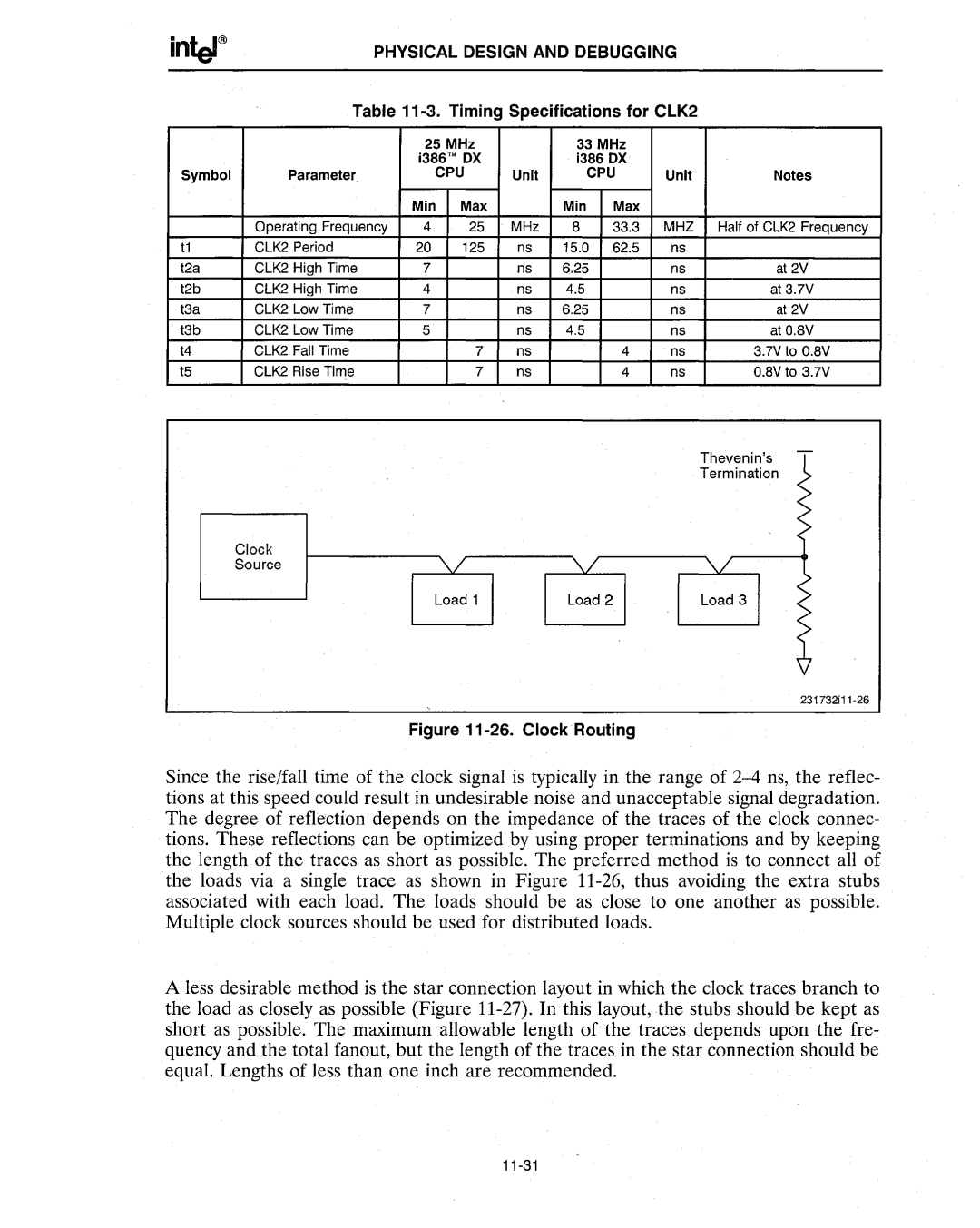
PHYSICAL DESIGN AND DEBUGGING
Table 11-3. Timing Specifications for CLK2
|
| 25 MHz |
| 33 MHz |
|
| ||
|
| i386'"OX |
| 1386 OX |
|
| ||
Symbol | Parameter | CPU | Unit | CPU | Unit | Notes | ||
|
| Min | Max |
| Min | Max |
|
|
| Operating Frequency | 4 | 25 | MHz | B | 33.3 | MHZ | Half of CLK2 Frequency |
t1 | CLK2 Period | 20 | 125 | ns | 15.0 | 62.5 | ns |
|
t2a | CLK2 High Time | 7 |
| ns | 6.25 |
| ns | at 2V |
t2b | CLK2 High Time | 4 |
| ns | 4.5 |
| ns | at3.7V |
t3a | CLK2 Low Time | 7 |
| ns | 6.25 |
| ns | at 2V |
t3b | CLK2 Low Time | 5 |
| ns | 4.5 |
| ns | atO.BV |
t4 | CLK2 Fall Time |
| 7 | ns |
| 4 | ns | 3.7Vto O.BV |
t5 | CLK2 Rise Time |
| 7 | ns |
| 4 | ns | O.BVto 3.7V |
Thevenin's
Termination
Clock
Source
Figure 11-26. Clock Routing
Since the rise/fall time of the clock signal is typically in the range of
A less desirable method is the star connection layout in which the clock traces branch to the load as closely as possible (Figure
